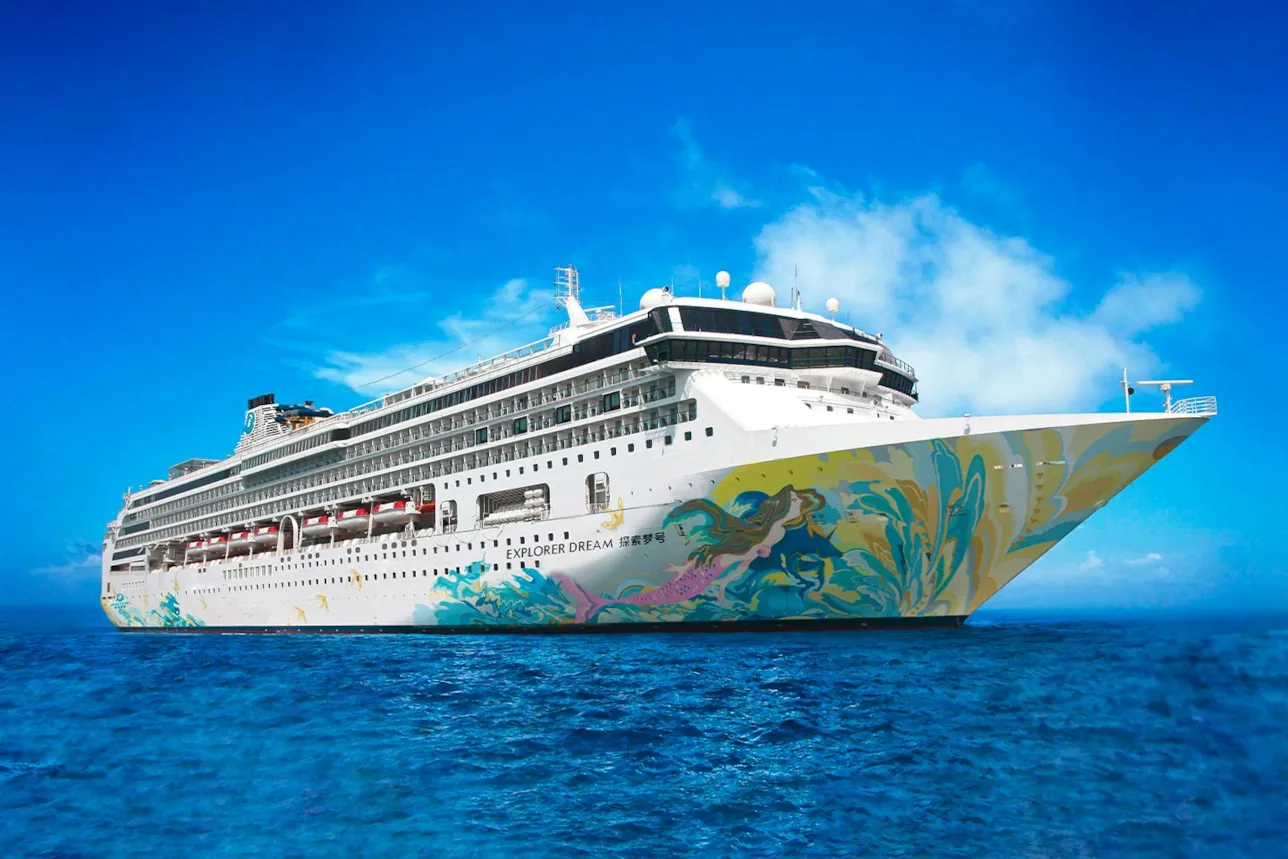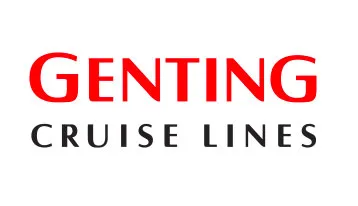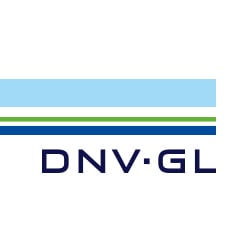

A first mover in infection prevention
As the first cruise company to have a vessel certified for disease prevention, Genting Cruise Lines shares their experiences with CIP-M certification and their early return to operation in Taiwan.
Featuring in this interview

Captain Håvard Ramsøy, Vice President Marine Operations

Captain Håvard Ramsøy, a Master Mariner, started his career in 1997 as a senior marine officer on board various cruise ships belonging to Norwegian Cruise Lines. He was subsequently involved in different newbuilding projects before becoming captain – a stint lasting six years. In 2013 he joined Star Cruises as Vice President Nautical and later assumed the position of Vice President Marine Operations at Genting Cruise Lines in 2018.

Simon Mockler, Head of Section Maritime Advisory Americas

Simon Mockler is a Risk Management Consultant, with a decade of experience in multiple industry segments in safety, operational and technical risk. He holds a M Eng (Hons) in Ship Science with Naval Architecture from the University of Southampton.
Captain Ramsøy, Genting Cruise Lines was the first cruise operator in Asia to commence operations after many months of halt due to COVID-19. What have your experiences with the Taiwan cruises been so far?

Through months of detailed planning with the Taiwanese authorities to ensure the health and safety of guests and crew, we were highly appreciative of being granted approval to resume operations in Taiwan with Explorer Dream under the Dream Cruises brand. As we were the first international cruise line in the world to begin sailing after the global cruise industry was shut down due to the pandemic, it was important that our enhanced preventive and safety protocols were already in place and met the stringent requirements of both local and international authorities. Taiwan was an ideal option to resume operations as the number of local COVID-19 cases was very low, as compared to global figures. Since this was a domestic cruise, the risk of infection was low and we implemented various measures including sanitation and other standard and risk-based measures adapted to local requirements, such as ensuring all crew had undergone strict quarantine procedures and tested negative for COVID-19 prior to signing on for duty. We are pleased that we have received such an overwhelming response from the domestic market, with most sailings sold out, and as such, we have further extended our deployment in Taiwan in late October 2020.

Tell us a bit about the situation in January 2020, when the virus started to spread across the world. How was that for Genting Cruise Lines?

COVID-19 started in China, so our operations in China and Asia were the first to be impacted. The lockdown in January took our ships in the region out of service, and all sailings to Japan and Singapore were cancelled. Fortunately there were no instances of the virus on any of our ships, but we were still impacted by other ships making headlines with their outbreaks and passengers in quarantine in Australia, Japan and the US. These stories basically led to a backlash from the public towards cruise ships. Crisis management is built into our culture, with preparedness for fire, terrorism and force majeure, but also for disease or illness on board. Still, I don’t think anyone could honestly say that they were prepared for COVID-19. No one could have known how fast this virus would spread. We had to learn as we went along, and we are still learning.

You were among the first to be hit, and also one of the first to enact countermeasures. Can you share your experience with trying to combat the virus, also on board ships in service?

Being among the first to be impacted also meant that our operations in Asia could be the first ones to recover. But in order to achieve this, we needed to be prepared for recovery. We felt we did not have the time to wait for formal requirements to be issued, so we decided to initiate our own preparations in order to keep ahead of developments. We were already cooperating with medical consultancies and organizations, but we wanted to verify that what we were doing was effective. For this we required third-party verification. DNV GL was already offering a Certification in Infection Prevention (CIP), which covered basically the same need, but in a different scenario. In addition to preventing the spread of disease on board, our goal was to bring ships back into service early, and we felt the CIP programme adapted to a maritime scenario could help us reach that goal. Some countries wanted to use our ships as hospitals or quarantine ships, but this presented a different challenge. In fact we did charter two ships to the Singapore government as quarantine facilities for migrant workers recovering from COVID-19, and our work with DNV GL and the government in Singapore helped us achieve that . Receiving certification from DNV GL for this purpose was an important learning experience, but customizing the system for active cruise ships was a new challenge.

How did DNV GL develop the CIP-M product, specifically tailored to the maritime industry?

When we sat down with our Healthcare certification team, we realized that hospitals and cruise ships may look different, but they encompass many of the same elements. From an infection control perspective, you have to consider medical facilities, food and beverage, accommodation and staff. The difference is in what requirements you apply where, and of course the fact that the facility is moving. We began the exercise of transferring knowledge from Healthcare to Maritime, and by mid-April we were able to present a programme to Genting Cruise Lines.

Captain Ramsøy, can you describe the actual process from Genting Cruise Lines’ perspective – what has been learned along the way?

The first thing we learned during the certification of Explorer Dream was that we could accomplish a great deal with online collaboration. We had a very ambitious timeline demanding quick results, and the process to review all the necessary documents and procedures was quite intense. We shared all these with the DNV GL – Healthcare team, and they began looking into shipping-based procedures from a fresh perspective. We focused on a good mix of active workshop participation and theory in order to arrive at the best solution for conducting the initial audit, which was performed remotely. Hardware is actually not our main focus, it’s more about talking to the people on board, making sure they understand the situation and the requirements. The physical inspection would take place later, but our initial attention was on the crew.

Before we started on the audit schedule, we needed to align our requirements with the Genting Cruise Lines’ team. Right from the first set of requirements, we needed to do some interpretation to translate from healthcare to maritime. We had clear goals, but we had to determine how this would transfer to a maritime environment. Workshops were a very useful tool here, helping to grow and disseminate the knowledge in our organization. Travel restrictions would have made a site visit difficult, but an on-site audit would simply not have delivered the required assurance when operating with a minimum number of crew on board. As such, we took the same staggered audit approach we use for a new shipping company or a newbuild delivery, using the remote process to establish a dialogue with senior management. When we had gained an understanding of the shared objectives and how the office was going to work, we could move on to ensuring that there was a plan for the ship, and deciding how to implement the programme on board. This starts an interim certification period, with ongoing monitoring and ultimately an on-board audit to verify the system in action.

Captain Ramsøy, was Genting Cruise Lines prepared for meeting hospital infection prevention standards, or did you have to make changes?

There are two parts to the preparations: the measures to prepare in the event of a pandemic, and preparing to operate during the pandemic. We were fully prepared to handle booking, check-in with scanning , the boarding process and so on. Local rules will vary from country to country, but certain elements are the same, like sanitation measures and masks. Occupancy has not been universally defined, but we are not operating with full ships in any case. In the end, virtually every part of the operation had to be altered, but without causing too much inconvenience. We do have to acknowledge that the cruise experience will be different under the new measures, though. Whether this is the new normal, or if we will go back to the old ways of doing things, is hard to say. For example, the buffet is gone, and honestly it may never reappear.

How demanding was completing the certification process in just three months?

The audit process took place over a few weeks, but we already had three months of work behind us when we started to talk to DNV GL. They had quite a bit of feedback for us on our materials, but they are healthcare experts and we are mariners, so we have to expect different cultures and terminologies. We had to meet in the middle, but that was the whole point, to be able to use outside expertise to help us close the gaps and become better.

I would add that we are intentionally not prescriptive in our approach. Rather, we are looking to identify robust systems that are in line with leading practice. Where we might have questions about the company’s choices, we want to hear them justify these with risk-based and evidence-based reasoning. There is no checklist, it’s more about helping to mature a company’s own approach to infection prevention. Our long-term goal is to help companies be ready for future pandemics or local epidemics. By keeping the focus on standards and principles we can help them to very quickly adapt their processes in the event of new challenges.

Captain Ramsøy, why did Genting Cruise Lines choose to work with DNV GL?

DNV GL is the only class society with a comprehensive healthcare certification programme to offer. Others could document our procedures, but DNV GL was the only one with auditing, surveying and certification. Also the long partnership between Genting and DNV GL made the choice easier. We know each other well.

Looking forward, how do you see IMO, port state and flag state regulations for the prevention of infectious diseases developing? Will CIP-M be integrated into a larger scheme?

We believe this will happen in phases. The industry will learn as we go along. The Centers for Disease Control and Prevention (CDC) in the US is working on standard requirements, and the EU has just released their standards. China has also sent out a draft for review. These are fairly similar, but with local variations. When they can look at each other’s results, we believe IMO, ports, flags and the industry itself will eventually converge.

This issue needs to be at the top of the IMO agenda. The crew change crisis has demonstrated the fundamental problem of a lack of standardization and trust in our global public health systems. During the first stages of the pandemic, national interests were put first. Months later, repatriation is still not possible for many crews. This is a huge problem with massive implications for our seafarers and the way our industry works. Different states did their own thing, and many crews are stuck behind closed borders. There has to be a dialogue between companies, industry and countries. We need to have a common understanding of requirements across shipping as a single system. It simply cannot be us versus them. If there is an outbreak of a virus on board, we cannot allow countries to just banish a ship to sea and strand the passengers and crew. Both sides have to accept each other’s requirements and take responsibility. We believe cruise can play an important role in helping to drive awareness of the maritime industry’s response, simply because cruise has a high public profile.

Will cruising in a single country become the new norm?

I think it makes sense to start with domestic cruises. We are discussing with different countries about how to start up again. Taiwan is the first, and their domestic tourism has picked up. Governments want this to happen, and that is how this discussion started. If passengers can travel safely within their own waters, cruises can offer them that opportunity as long as the dialogue is good between companies and countries.

-
Preventing infection risks onboard vessels
Read how DNV GL's CIP-M certification has been developed.
-
Certification services in infection prevention and control
Read about DNV GL Maritime's CIP-M programme to improve management of infection risk in companies
-
Silver Spirit becomes first ultra-luxury cruise ship to sail with new CIP-M certification
Read our related press release